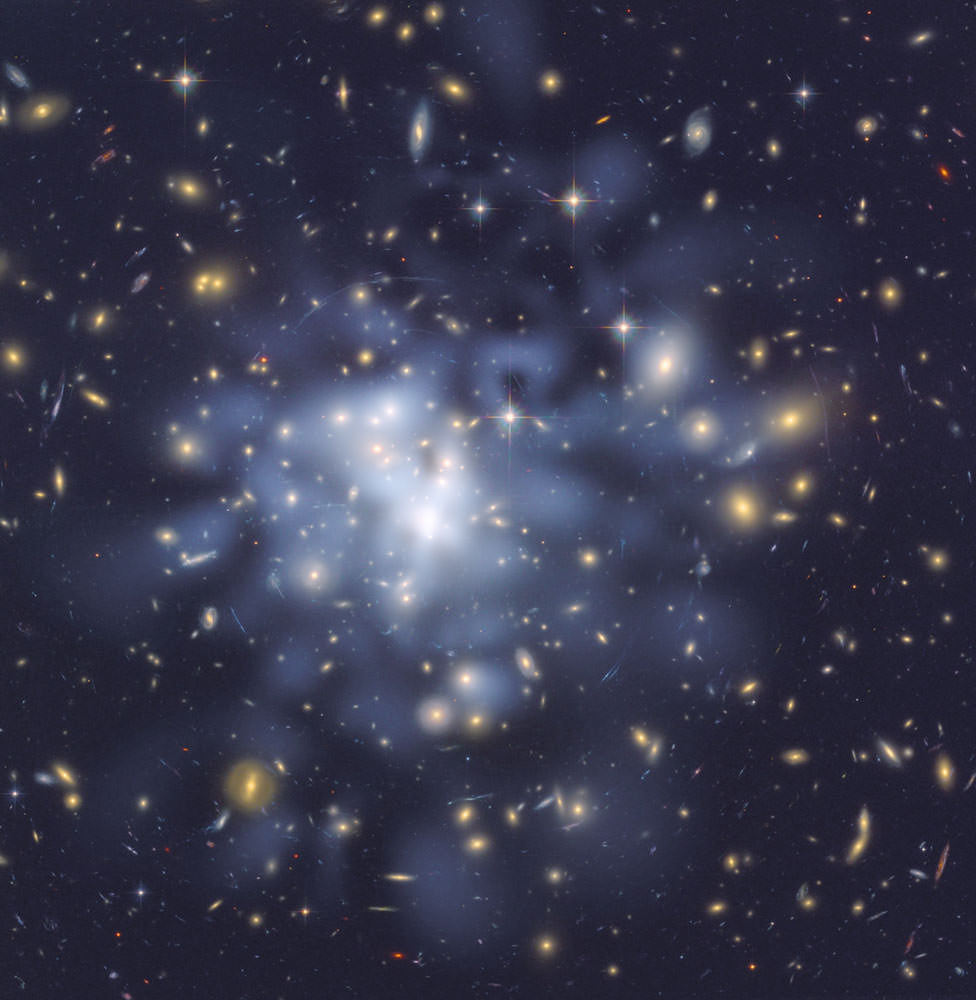[/caption]
Supernovae are among astronomers most important tools for exploring the history of the universe. Their frequency allows us to examine how active star formation was, how heavy elements have developed, and the distance to galaxies across vast distances. Yet even these titanic explosions are only so bright, and there’s an effective limit on how far we can detect them with the current generation of telescopes. However, this limit can be extended with a little help from gravity.
One of the consequences of Einstein’s theory of general relativity is that massive objects can distort space, allowing them to act as a lens. While first postulated in 1924, and proposed for galaxies by Fritz Zwicky in 1937, the effect wasn’t observed until 1979 when a distant quasar, an energetic core of a distant galaxy, was split in two by the gravitational disturbances of an intervening cluster of galaxies.
While lensing can distort images, it also provides the possibility that it may magnify a distant object, increasing the amount of light we receive. This would allow astronomers to probe even more distant regions with supernovae as their tool. But in doing so, astronomers must look for these events in a different manner than most supernova searches. These searches are generally limited to the visible portion of the spectrum, the portion we see with our eyes, but due to the expansion of the universe, the light from these objects is stretched into the near-infrared portion of the spectrum where few surveys to search for supernovae exist.
But one team, led by Rahman Amanullah at Stockholm University in Sweden, has conducted a survey using the Very Large Telescope array in Chile, to search for supernovae lensed by the massive galaxy cluster Abell 1689. This cluster is well known as a source of gravitationally lensed objects, making visible some galaxies that formed shortly after the Big Bang.
In 2009, the team discovered one supernova that was magnified by this cluster that originated 5-6 billion lightyears away. In a new paper, the team reveals details about an even more distant supernova, nearly 10 billion lightyears distant. This event was magnified by a factor of 4 from the effects of the foreground cluster. From the distribution of energy in different portions of the spectrum, the team concludes that the supernova was an implosion of a massive star leading to a core-collapse type of supernova. The distance of this event puts it among the most distant supernovae yet observed. Others at this distance have required extensive time using the Hubble telescope or other large telescopes.


